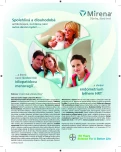Peripartal life-threating haemorrhage – intensive care and haematological treatment
Authors:
D. Seidlová 1; J. Blatný 2
Authors‘ workplace:
II. ARO, FN Brno, LF MU Brno, prim. MUDr. D. Seidlová, Ph. D.
1; Oddělení dětské hematologie, FN Brno, PMDV, prim. MUDr. J. Blatný, Ph. D.
2
Published in:
Ceska Gynekol 2013; 78(4): 379-384
Overview
Peripartal life-threating bleeding is serious and frequent complication comming during the labor. Diagnosis is based on assesment of blood loss and the reason of bleeding. Obstetrical and surgical treatment including invasive radiological methods combining with resuscitation care based on support organ functions and energic susbstitution coagulation components is essential. The aim is to rescue the life of women and to preserv her reproductive ability.
Keywords:
peripartal hemorrhage – coagulation disorder – uterine atony – hysterectomy – fibrinogen – rFVIIa
Sources
1. Ahmed, S., Harrity, C., Johnson, S., et al. The efficacy of fibrinogen concentrate compared with cryoprecipitate in major obstetric haemorrhage–an observational study. Transfusion Med, 2012, 22, 5, p. 344–349.
2. Alfirevic, Z., Elbourne, D., Pavord, S., et al. Use of recombinant activated factor VII in primary postpartum hemorrhagie. The northern european registry 2000–2004. Obstet Gynecol, 2007, 110, p. 1270–1278.
3. Balík, M., Binder, T., Blatný, J., et al. Peripartální život ohrožující krvácení – mezioborové konsenzuální stanovisko. Čes Gynek, 2013, suppl., s. 38–40.
4. Barillari, G., Frigo, M., Casarotto, M., et al. Use of recombinant activated factor VII in severe post-partum haemorrhage: Data from Italian Registry A multicentic observational retrospective study. Trombosis Res, 2009, 6, p. 41–47.
5. Blatný, J., Cvachovec, K., Černý, V., et al. Zásady podpory koagulace u život ohrožujícího a neztišitelného krvácení – konsenzuální stanovisko. Anest Intenziv Med, 2006, 6.
6. Blatný, J., Seidlová, D., Penka, M., et al. Severe postpartum haemorrhage treated with recombinant activated factor VII in 80 Czech patients: analysis of the UniSeven registry. Int J Obstet Anest, 2011, 20, 4, s. 367–368. doi:10.1016/j.ijoa.2011.07.008.
7. Binder, T. Šokové stavy v porodnictví. Moderní porodnictví. Praha: Grada, 2008, s. 303–304.
8. Duffy, MR. Guidelines for use of recombinant factor VIIa in life-threatening post-partum haemorrhage. Int J Obstet Anesth, 2007, 16, p. 299–300.
9. Feyereisl, J. Závažné postpartální hemoragie a doporučený postup k léčbě. Čes Gynek, 2008, 73, 6, s. 375–376.
10. Haynes, J., Laffan, M., Platt, F. Use of recombinant activated factor VII in massive obstetric haemorrhage. Int J Obstet Anesth, 2007, 16, p. 40–49.
11. Hedner, U. Mechanism of action, development and clinical experience of recombinant FVIIa. J Biotechnol, 2006, 124, p. 747–757.
12. Franchini, M., et al. A critical review on the use of recombinant factor viia in life-threatening obstetric postpartum hemorrhage. Semin Thromb Hemost, 2008, 34, p. 104–112.
13. Hedner, U. Mechanism of action, development and clinical experience of recombinant FVIIa. J Biotechnol, 2006, 124, p. 747–757.
14. Holub, Z., Feyereisl, J., Kabelik, L. Successful treatment of severe post-partum bleeding after caesarean section using recombinant activated factor VII. Ces Gynek, 2005, 70, p. 144–148.
15. Hsia, CC., Chin-Yee, IH., McAlister, VC. Use of recombinant activated factor VII in patients without hemophilia. A meta-analysis of randomized control trials. Ann Surg, 2008, 248, p. 61–68.
16. Khan, KS., Wojdyla, D., Say, L., et al. WHO analysis of maternal death; a systematic review. Lancet, 2006,367, p. 1066–1074.
17. Mannová, J., Petrenko, M., Seidlová, D. Aktivovaný rekombinantní faktor VII u závažného poporodního krvácení: kazuistiky Prakt Gyn, 2007, 14, 4, s. 171–176.
18. Mayo, A., Martinowitz, U., Kluger, Y. Coagulopathy in the critically injured patient. Yearbook of Intensive Care and Emergency Medicine, 2006, p. 232–243.
19. Mousa, HA., Cording, V., Alfirevic, Z. Risk factors and interventions associated with major primary postpartum hemorrhage unres-ponsive to first-line conventional therapy. Acta Obstet Gyn Scand, 2008, 87, p. 652–661.
20. Rossaint, R., Bouillon, B., Cerny, V., et al. Management of bleeding following major trauma: an updated European guideline. ccforum.com/content/pdf/cc8943.pdf 2010.
21. Roztočil, A. Nepravidelnosti III. doby porodní. Moderní porodnictví. Praha: Grada, 2008, s. 298–301, 307–309.
22. Rodička a novorozenec 2008, 2007. Praha: Ústav zdravotnických informací a statistiky ČR.
23. Rossaint, R., Spahn, DR. Trauma: bleeding, coagulopathy and blood component transfusion. Yearbook of Intensive Care and Emergency Med, 2006, p. 255–264.
24. Seidlová, D., Blatný, J., Penka, M., et al. Rekombinantní aktivovaný faktor VII v léčbě závažného poporodního krvácení. Data z registru UniSeven v České republice. Anest Intenziv Med, 2010, 5.
25. Seidlová, D., Blatný, J. Konzervativní léčba poporodního krvácení. In Kritické stavy v porodnictví. 1. vyd. Praha, Kamenice: Galén, MCC Publishing, 2012. s. 119–122. ISBN 978-80-7262-949-7.
26. Spahn, DR., Bouillon, B., Cerny, V., et al. Management of bleeding and coagulopathy following major trauma: an updated European guideline. Crit Care, 2013, 17, R76.
27. Sobieszczyk, S., Breborowiciz, GH., Platicanov, V. Recombinant factor VIIa in the management of postpartum bleeds; an audit of clinical use. Acta Obstet Gyn, 2006, 85, p. 1239–12347.
28. Vincent, JL., Rossaint, RB., Ozier, YZDD., Spahn, DR. Recommendations on the use of recombinant activated factor VII as an adjunctive treatment for massive bleeding – a European perspective. Crit Care, 2006, 10, 4, p. 120.
29. Zhang, W., Alexander, S., Bouvier-Colle MacFarlane, A., MOMS-B Group. Incidence of severe pre-eclampsia, postpartum haemorrhage and sepsis as a surrogete marker of severe maternal morbidity in a European population-based study: the MOMS-B survey. BJOG, 2005, 112, p. 89–96.
Labels
Paediatric gynaecology Gynaecology and obstetrics Reproduction medicineArticle was published in
Czech Gynaecology

2013 Issue 4
Most read in this issue
- Vulvar melanoma
- Laparoscopic treatment of borderline ovarian tumorsin fertile women
- Nocturnal polyuria, treatment with desmopressin
- Peripartal life-threating haemorrhage – intensive care and haematological treatment
